David Uthus
Dr Genre: Reinforcement Learning from Decoupled LLM Feedback for Generic Text Rewriting
Mar 09, 2025Abstract:Generic text rewriting is a prevalent large language model (LLM) application that covers diverse real-world tasks, such as style transfer, fact correction, and email editing. These tasks vary in rewriting objectives (e.g., factual consistency vs. semantic preservation), making it challenging to develop a unified model that excels across all dimensions. Existing methods often specialize in either a single task or a specific objective, limiting their generalizability. In this work, we introduce a generic model proficient in factuality, stylistic, and conversational rewriting tasks. To simulate real-world user rewrite requests, we construct a conversational rewrite dataset, ChatRewrite, that presents ``natural''-sounding instructions, from raw emails using LLMs. Combined with other popular rewrite datasets, including LongFact for the factuality rewrite task and RewriteLM for the stylistic rewrite task, this forms a broad benchmark for training and evaluating generic rewrite models. To align with task-specific objectives, we propose Dr Genre, a Decoupled-reward learning framework for Generic rewriting, that utilizes objective-oriented reward models with a task-specific weighting. Evaluation shows that \approach delivers higher-quality rewrites across all targeted tasks, improving objectives including instruction following (agreement), internal consistency (coherence), and minimal unnecessary edits (conciseness).
Reconsidering Sentence-Level Sign Language Translation
Jun 16, 2024Abstract:Historically, sign language machine translation has been posed as a sentence-level task: datasets consisting of continuous narratives are chopped up and presented to the model as isolated clips. In this work, we explore the limitations of this task framing. First, we survey a number of linguistic phenomena in sign languages that depend on discourse-level context. Then as a case study, we perform the first human baseline for sign language translation that actually substitutes a human into the machine learning task framing, rather than provide the human with the entire document as context. This human baseline -- for ASL to English translation on the How2Sign dataset -- shows that for 33% of sentences in our sample, our fluent Deaf signer annotators were only able to understand key parts of the clip in light of additional discourse-level context. These results underscore the importance of understanding and sanity checking examples when adapting machine learning to new domains.
Memory Augmented Language Models through Mixture of Word Experts
Nov 15, 2023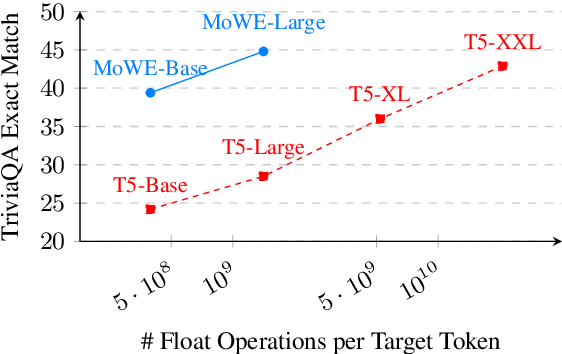



Abstract:Scaling up the number of parameters of language models has proven to be an effective approach to improve performance. For dense models, increasing model size proportionally increases the model's computation footprint. In this work, we seek to aggressively decouple learning capacity and FLOPs through Mixture-of-Experts (MoE) style models with large knowledge-rich vocabulary based routing functions and experts. Our proposed approach, dubbed Mixture of Word Experts (MoWE), can be seen as a memory augmented model, where a large set of word-specific experts play the role of a sparse memory. We demonstrate that MoWE performs significantly better than the T5 family of models with similar number of FLOPs in a variety of NLP tasks. Additionally, MoWE outperforms regular MoE models on knowledge intensive tasks and has similar performance to more complex memory augmented approaches that often require to invoke custom mechanisms to search the sparse memory.
YouTube-ASL: A Large-Scale, Open-Domain American Sign Language-English Parallel Corpus
Jun 27, 2023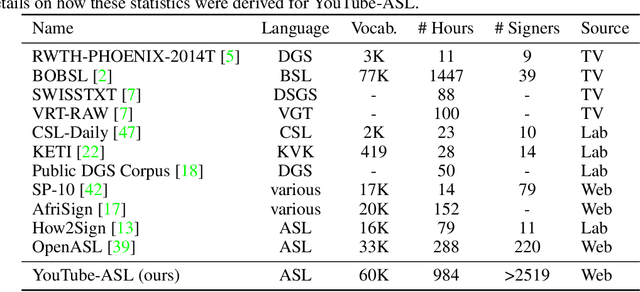



Abstract:Machine learning for sign languages is bottlenecked by data. In this paper, we present YouTube-ASL, a large-scale, open-domain corpus of American Sign Language (ASL) videos and accompanying English captions drawn from YouTube. With ~1000 hours of videos and >2500 unique signers, YouTube-ASL is ~3x as large and has ~10x as many unique signers as the largest prior ASL dataset. We train baseline models for ASL to English translation on YouTube-ASL and evaluate them on How2Sign, where we achieve a new finetuned state of the art of 12.39 BLEU and, for the first time, report zero-shot results.
mLongT5: A Multilingual and Efficient Text-To-Text Transformer for Longer Sequences
May 18, 2023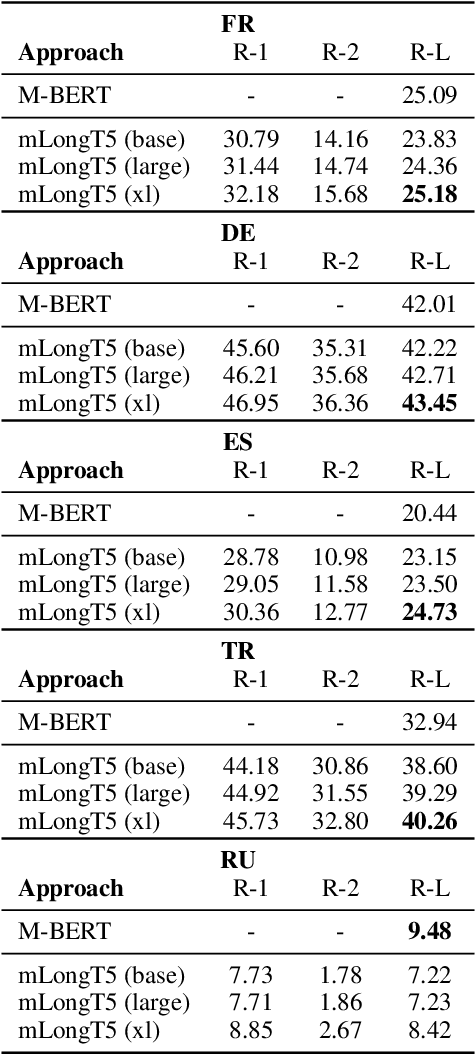


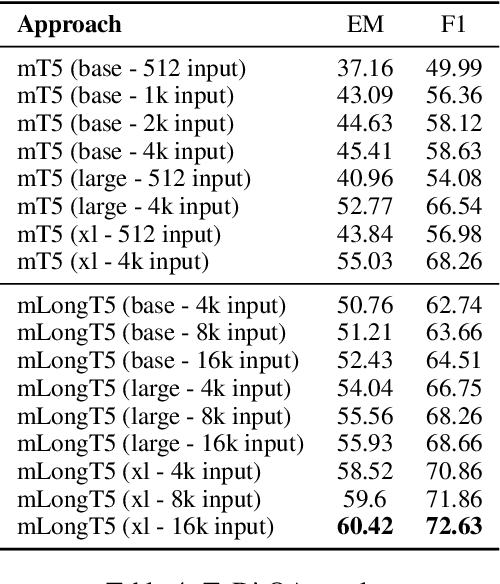
Abstract:We present our work on developing a multilingual, efficient text-to-text transformer that is suitable for handling long inputs. This model, called mLongT5, builds upon the architecture of LongT5, while leveraging the multilingual datasets used for pretraining mT5 and the pretraining tasks of UL2. We evaluate this model on a variety of multilingual summarization and question-answering tasks, and the results show stronger performance for mLongT5 when compared to existing multilingual models such as mBART or M-BERT.
CoLT5: Faster Long-Range Transformers with Conditional Computation
Mar 17, 2023Abstract:Many natural language processing tasks benefit from long inputs, but processing long documents with Transformers is expensive -- not only due to quadratic attention complexity but also from applying feedforward and projection layers to every token. However, not all tokens are equally important, especially for longer documents. We propose CoLT5, a long-input Transformer model that builds on this intuition by employing conditional computation, devoting more resources to important tokens in both feedforward and attention layers. We show that CoLT5 achieves stronger performance than LongT5 with much faster training and inference, achieving SOTA on the long-input SCROLLS benchmark. Moreover, CoLT5 can effectively and tractably make use of extremely long inputs, showing strong gains up to 64k input length.
RISE: Leveraging Retrieval Techniques for Summarization Evaluation
Dec 17, 2022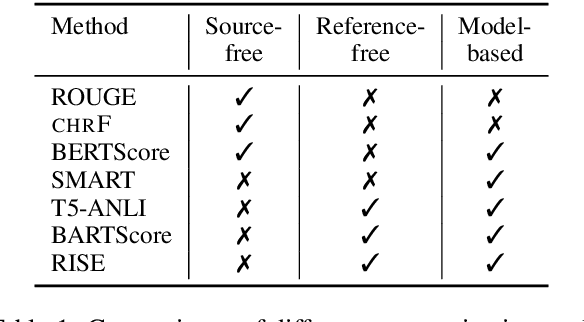
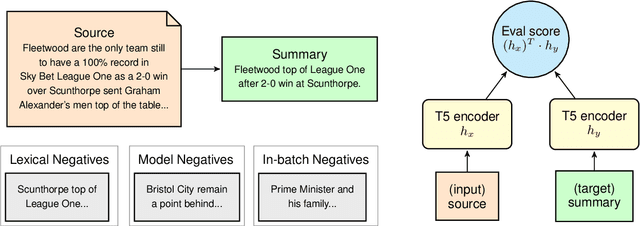
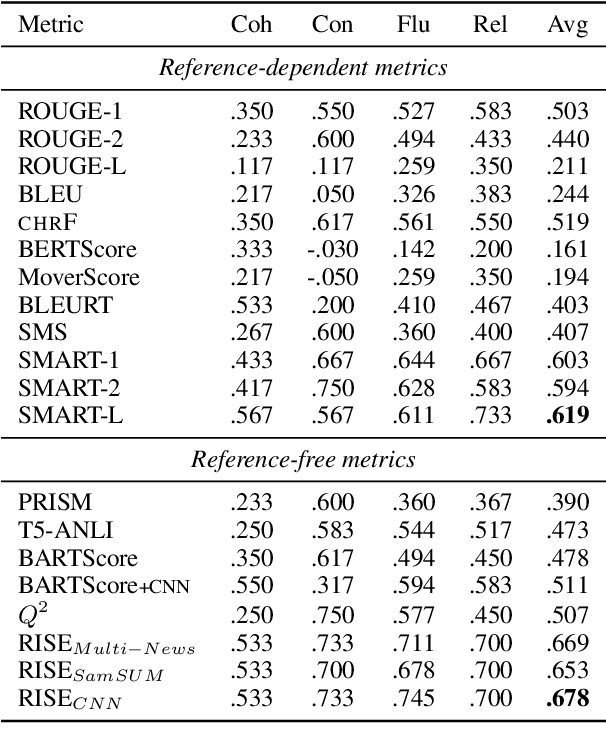
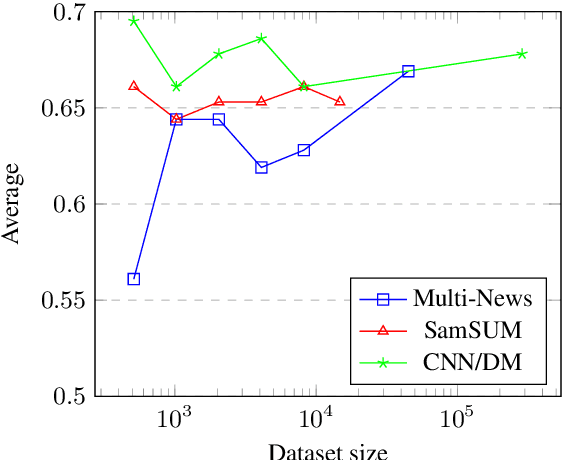
Abstract:Evaluating automatically-generated text summaries is a challenging task. While there have been many interesting approaches, they still fall short of human evaluations. We present RISE, a new approach for evaluating summaries by leveraging techniques from information retrieval. RISE is first trained as a retrieval task using a dual-encoder retrieval setup, and can then be subsequently utilized for evaluating a generated summary given an input document, without gold reference summaries. RISE is especially well suited when working on new datasets where one may not have reference summaries available for evaluation. We conduct comprehensive experiments on the SummEval benchmark (Fabbri et al., 2021) and the results show that RISE has higher correlation with human evaluations compared to many past approaches to summarization evaluation. Furthermore, RISE also demonstrates data-efficiency and generalizability across languages.
LongT5: Efficient Text-To-Text Transformer for Long Sequences
Dec 15, 2021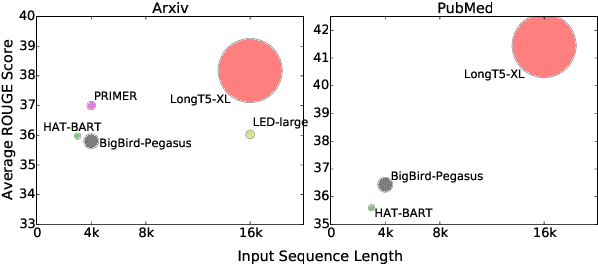

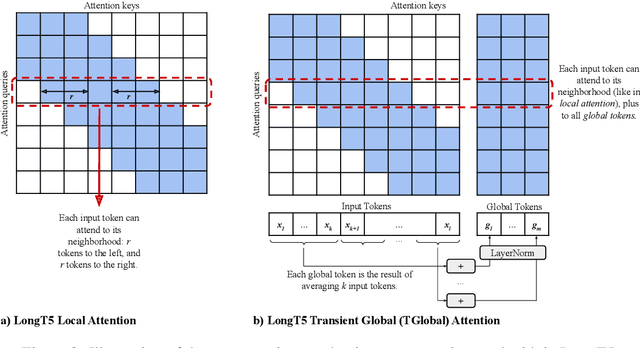
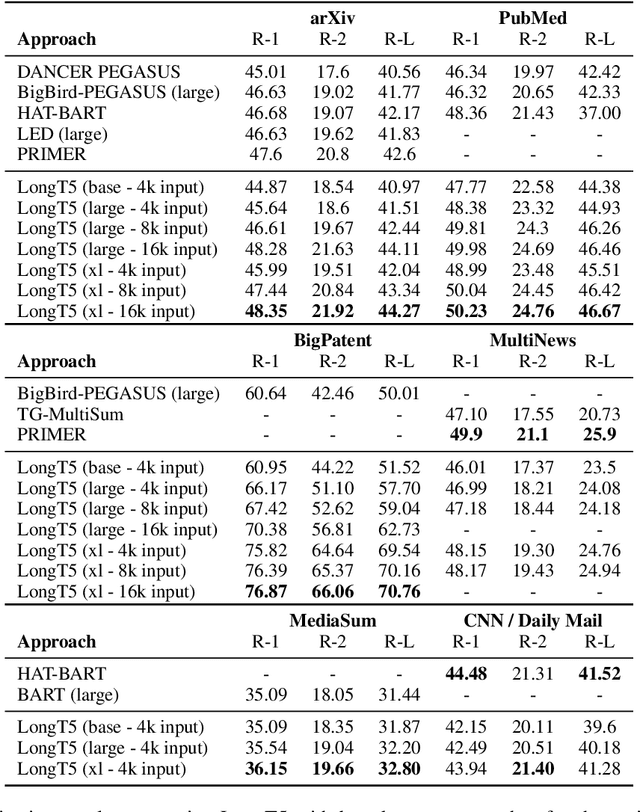
Abstract:Recent work has shown that either (1) increasing the input length or (2) increasing model size can improve the performance of Transformer-based neural models. In this paper, we present a new model, called LongT5, with which we explore the effects of scaling both the input length and model size at the same time. Specifically, we integrated attention ideas from long-input transformers (ETC), and adopted pre-training strategies from summarization pre-training (PEGASUS) into the scalable T5 architecture. The result is a new attention mechanism we call {\em Transient Global} (TGlobal), which mimics ETC's local/global attention mechanism, but without requiring additional side-inputs. We are able to achieve state-of-the-art results on several summarization tasks and outperform the original T5 models on question answering tasks.
Augmenting Poetry Composition with Verse by Verse
Mar 31, 2021



Abstract:We describe Verse by Verse, our experiment in augmenting the creative process of writing poetry with an AI. We have created a group of AI poets, styled after various American classic poets, that are able to offer as suggestions generated lines of verse while a user is composing a poem. In this paper, we describe the underlying system to offer these suggestions. This includes a generative model, which is tasked with generating a large corpus of lines of verse offline and which are then stored in an index, and a dual-encoder model that is tasked with recommending the next possible set of verses from our index given the previous line of verse.
Investigating Societal Biases in a Poetry Composition System
Nov 05, 2020



Abstract:There is a growing collection of work analyzing and mitigating societal biases in language understanding, generation, and retrieval tasks, though examining biases in creative tasks remains underexplored. Creative language applications are meant for direct interaction with users, so it is important to quantify and mitigate societal biases in these applications. We introduce a novel study on a pipeline to mitigate societal biases when retrieving next verse suggestions in a poetry composition system. Our results suggest that data augmentation through sentiment style transfer has potential for mitigating societal biases.
 Add to Chrome
Add to Chrome Add to Firefox
Add to Firefox Add to Edge
Add to Edge